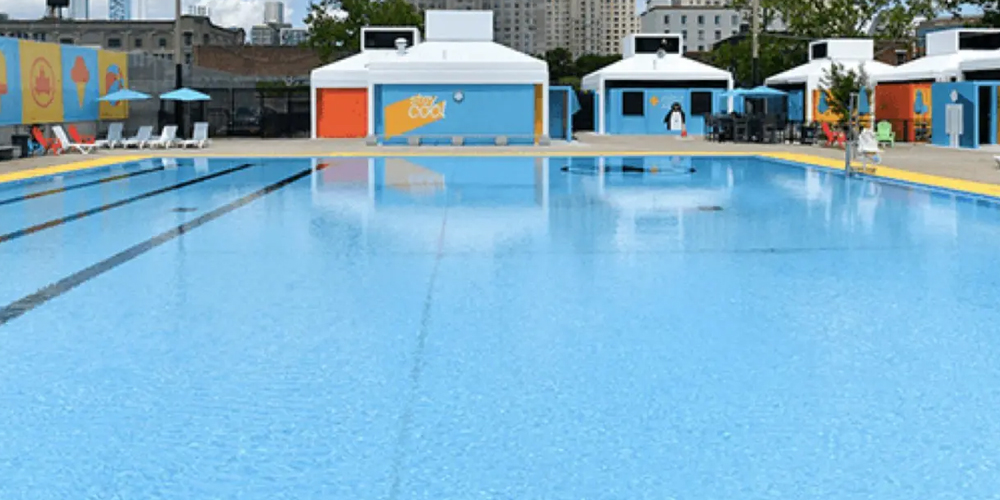Keeping your pool water healthy, clean, and safe is every pool owner’s top priority. Chlorine disinfectant is the most commonly used disinfectant in swimming pool maintenance, thanks to its powerful ability to kill bacteria, viruses, and algae. However, there are different types of chlorine disinfectants available on the market, and each type has specific methods of application. Knowing how to apply chlorine correctly is essential to protect both your pool equipment and swimmers.
In this article, we will explore whether you can put chlorine directly into a pool, and we’ll introduce several common types of chlorine products along with their recommended usage methods.
Types of Chlorine Disinfectants for Swimming Pools
The chlorine disinfectants used in swimming pools generally fall into two categories: solid chlorine compounds and liquid chlorine solutions. The most commonly used chlorine products include:
Trichloroisocyanuric Acid (TCCA)
Sodium Dichloroisocyanurate (SDIC)
Liquid Chlorine (Sodium Hypochlorite / Bleach Water)
Each type of chlorine compound has different chemical properties and application methods, which we’ll explain below.
1. Trichloroisocyanuric Acid (TCCA)
TCCA is a slow-dissolving chlorine disinfectant typically available in tablet or granular form. It’s widely used for long-term disinfection in both private and public pools.
How to Use TCCA:
Floating Chlorine Dispenser:
One of the most common and convenient methods. Place the desired number of tablets in a floating chlorine dispenser. Adjust the vents to control the chlorine release rate. Ensure the dispenser moves freely and doesn’t get stuck in corners or around ladders.
Automatic Chlorine Feeders:
These in-line or offline chlorinators are connected to the pool’s circulation system and automatically dissolve and distribute TCCA tablets as water flows through.
Skimmer Basket:
TCCA tablets can be placed directly into the pool skimmer. However, be cautious: high chlorine concentration in the skimmer can damage pool equipment over time.
2. Sodium Dichloroisocyanurate (SDIC)
SDIC is a fast-dissolving chlorine disinfectant, often available in granular or powder form. It is ideal for quick sanitation and shock treatments.
How to Use SDIC:
Direct Application:
You can sprinkle SDIC granules directly into the pool water. It dissolves rapidly and releases chlorine quickly.
Pre-dissolving Method:
For better control, dissolve SDIC in a container of water before evenly distributing it into the pool. This method helps avoid localized over-chlorination and is suitable for smaller pools.
3. Calcium Hypochlorite (Cal Hypo)
Calcium hypochlorite is a widely used chlorine compound with a high available chlorine content. It is typically available in granular or tablet form.
How to Use Calcium Hypochlorite:
Granules:
Do not add granules directly to the pool. Instead, dissolve them in a separate container, let the solution sit to allow sediment to settle, and pour only the clear supernatant into the pool.
Tablets:
Cal Hypo tablets should be used with a proper feeder or floating dispenser. They dissolve more slowly and are suitable for long-lasting disinfection.
4. Liquid Chlorine (Bleach Water / Sodium Hypochlorite)
Liquid chlorine, commonly known as bleach water, is a convenient and cost-effective disinfectant. However, it has a shorter shelf life and contains a lower percentage of available chlorine compared to solid forms.
How to Use Bleach Water:
Direct Application:
Sodium hypochlorite can be poured directly into the pool water. Because of its low concentration, a larger volume is required to achieve the same disinfection effect.
Post-Addition Care:
After adding bleach water, always test and adjust the pool’s pH levels, as sodium hypochlorite tends to raise pH significantly.
Can You Add Chlorine Directly to the Pool?
The short answer is yes, but it depends on the type of chlorine:
SDIC and liquid chlorine can be added directly to the pool.
TCCA and calcium hypochlorite require proper dissolution or use of a dispenser to avoid damage to pool surfaces or equipment.
Improper use of chlorine—especially solid forms—can lead to bleaching, corrosion, or ineffective disinfection. Always follow product instructions and safety guidelines.
When in doubt, consult with a certified pool professional to determine the right chlorine product and dosage for your specific pool size and conditions. Regular testing of chlorine and pH levels is essential to keep your water
Post time: Mar-20-2024


